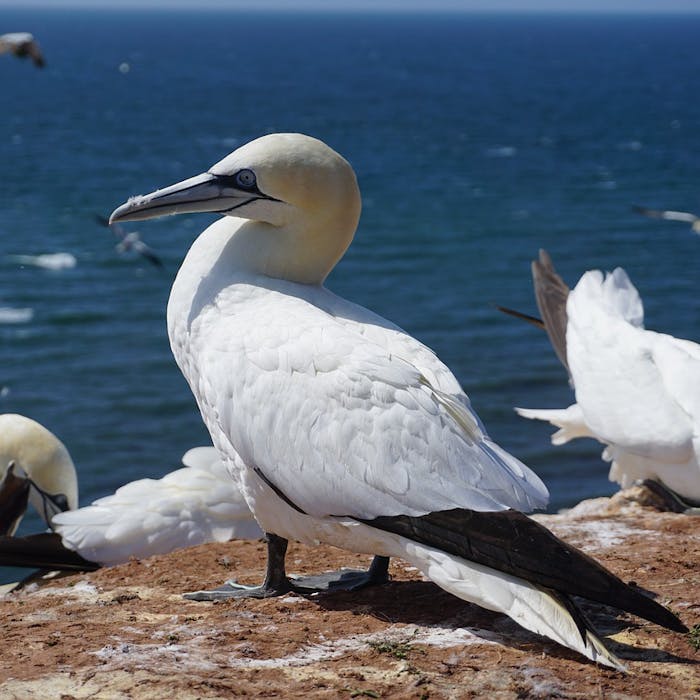
Northern Gannet - a photogenic seabird
Great big glorious gannets are often shown on our television screens nesting in huge numbers on inaccessible sea cliffs and islets. But they breed in significant numbers at only a few localities and so are an Amber List species.
The Northern Gannet is one of our largest seabirds. Adult are large and bright white with black wingtips. They are distinctively shaped with a long neck and long pointed beak, long pointed tail, and long pointed wings. At sea they flap and then glide low over the water, often travelling in small groups. They feed by flying high and circling before plunging into the sea for fish. Diving from heights of 30m, they can hit the water at speeds of up to 60mph. They have an extensive network of air-sacs between their muscles and skin to help cushion this impact.
Gannets nest on coastal cliffs around the north of the UK, sometimes in large colonies like those on some Scottish islands, and at sites in Wales, North East England and the Channel Islands. The birds mate for life, and live up to about 17 years on average.
220,000 pairs of gannets nest around Britain's coasts - 60-70% of the world's gannet population. Bass Rock, an island in the Firth of Forth in Scotland, has a famous nesting colony where masses of raucous birds can be seen and heard.
Further reading
Links to external websites are not maintained by Bite Sized Britain. They are provided to give users access to additional information. Bite Sized Britain is not responsible for the content of these external websites.
